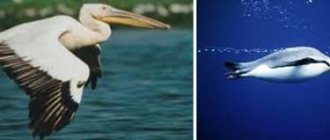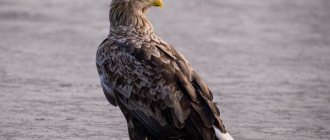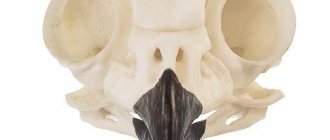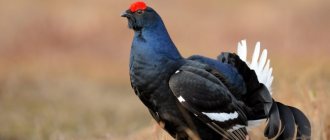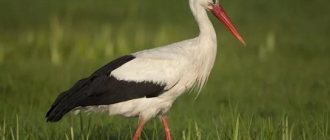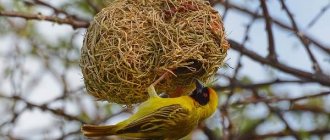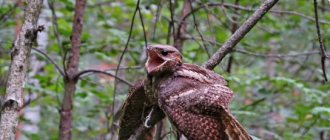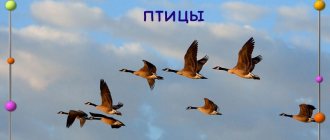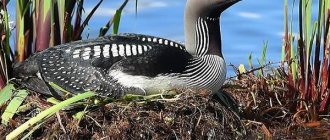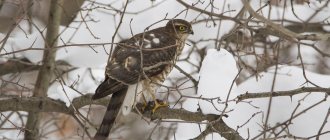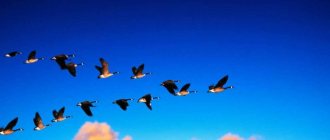Numerous orders of birds have adapted to a variety of environmental conditions. The water bodies of our planet have become a habitat and food source for waterfowl. Many of them can not only swim, but also dive well. Waterfowl are not in a separate order. They differ greatly in size and appearance, but have similar adaptation features to life on the water. Almost all representatives obtain food in their own way and rarely compete with each other in food.
Anseriformes waterfowl
Anseriformes include two families: Anatidae and Palamedea. The latter are heavy and large in size. The palamedea has a small head and an oblong neck. Ducks, on the other hand, are distinguished by webbed feet, a horizontally flattened beak, and a wide and streamlined body. The two families of the order Anseriformes are divided into 50 genera of birds. There are 150 species of birds. Among them:
Geese
They cackle characteristically and have a beak whose base is larger in height than in width. At the tip of the “nose” there is something like a marigold with a sharp edge. In addition to domestic geese, there are 10 wild ones:
1. Andean. It has a red beak and paws, a white head, neck and front of the body. Through halftones of brown, the color “flows” into black. It covers the back half of the body, part of the wings, and the tail.
The coloring is the same for females and males. The latter are slightly larger, reaching 80 centimeters in length and weighing about 3.5 kilograms. The name of the species indicates its habitat. These are the highlands of the Andes, Chile, Argentina, and Peru. Geese of this species rarely descend below 3 thousand meters above sea level. As a rule, this happens after heavy snowfalls in the mountains.
The Andean goose chooses grassy slopes for nesting
2. Gray. This is the ancestor of domestic geese. The bird began to be domesticated in 1300 BC. The geese remaining in nature are larger than others, reaching 90 centimeters in length. The weight of some gray geese is 6 kilograms. Females are usually smaller. Representatives of the sexes are similar in coloration, all gray.
The gray goose is a typical inhabitant of a homestead
3. Mountain. Originally from Central Asia. Most of the population lives in Kazakhstan, Mongolia and China. From the name of the species it is clear that its representatives choose mountainous areas.
There the birds are recognizable by two transverse black stripes on their white heads. One line runs across the back of the head from eye to eye. Another stripe is located at the junction of the head and neck. The bottom of the latter and the body of the bird are gray.
4. White. Breeds on the lands of Canada, Greenland, Eastern Siberia. Otherwise the species is called polar. The black edging of the wings stands out against the background of snow-white plumage. The bird's paws and beak are pink. A distinctive feature is the shortened, thick neck.
5. Bean man. Found in the tundra of the Eurasian continent. The bird's beak has a pink ring in the center, surrounded by black pigment. The plumage of waterfowl of this species is gray. The back and wings are dark. This is how the bean goose differs from the gray goose, whose color is uniform. There are also differences in size. The weight of the bean goose does not exceed 5 kilos.
6. Beloshey. Otherwise called blue. The bird has a white back of the neck. The rest of the body is colored gray, interspersed with barely noticeable white layers. It looks like blue. Hence the alternative name. The bird wearing it reaches 90 centimeters in length with an average weight of 3.5 kilograms. The bird lives in Alaska, Canada, the USA, and Siberia.
7. Nilsky. Introduced to Central Europe in the 18th century. Before this, birds lived only in the Nile Valley and Africa. They decided to transport the birds because of their attractive coloring. On a gray-beige background there are extensive white, green, and black spots.
The eyes are edged with brown. The beak and paws of the animal are red. The maximum weight of the Nile goose is 4 kilograms. The feathered species is aggressive in defending its territories and is difficult to domesticate.
8. Sukhonos. It is larger, but slimmer than the greylag goose. The standard length of the dry nose is 100 centimeters. The bird weighs about 4 kilograms. The color of the bird is brown with a network of white veins. There is also a white stripe at the base of the beak. He's black. If the goose is young, there is no white line at the base of the beak.
The sukhonos is easily recognized by its black beak
9. Magellan. Typical of South America. In the photo, waterfowl often show off in wet meadows. In their grassy expanses, birds gain weight of 2.5-3.5 kilograms with a body length of 70 centimeters. It is painted brown. The head is ashen. This is the female version. Males have a white head and chest. This is the only species of geese with different colors of different sexes.
10. Chicken. An Australian species of geese, it is distinguished by round black inserts on its light gray plumage. The markings are located closer to the tail. Associations with a peacock may arise. The beak of the chicken goose is yellow with two black spots. The beak itself is dark. The bird's feet are pink. Most geese are endangered. This is the reason for the extermination of birds for the sake of valuable feathers, which have lost relevance, and meat, which is considered a dish to this day.
Ducks
In addition to geese, the detachment includes ducks. They reach a maximum weight of 2 kilograms and are divided into the following subtypes:
- riverines, which include mallard, shoveler, teal, pintail, narrow-nose teal and garter teal
- diving, which includes the ducks themselves, ducks and pink-headed ducks
- mergansers, which include scaly, medium and large
Mergansers are distinguished by a narrow and curved beak towards the bottom. Most diving ducks are colorfully feathered. River species raise their tails above the water and are generally set high when swimming.
Swans
All swans have graceful movements, a harmonious body structure with a long neck. Birds of the category are divided into 7 species:
1. Black from Australia and North America. The feathered beak is deep red, white at the end. Together with its beak, the body length of a black swan is 140 centimeters. The animal weighs 9 kilograms.
2. Black-necked. Its body is white and the tip of its beak is gray. With the same 140 centimeters in length, the bird weighs no more than 6.5 kilograms.
3. Mute, a typical swan for Europe and Asia, gains 15 kilograms of mass. The bird's body length reaches 180 centimeters. The mute mute's feet are black, its beak is red, and its plumage is white.
4. Trumpeter. It is a white waterfowl with a black beak. The animal's body length reaches 180 centimeters and its weight is 13 kilos.
5. Whooper. There is a yellow insert on the black beak of this snow-white bird. The length of the whooper does not exceed 145 centimeters. The mass of the bird is a maximum of 12 kilograms.
6. American swan. Looks like a whooper, except for the shortened neck and more rounded head. In addition, an American is 2 kilos lighter than his relative.
7. Small swan. It is included in the species of waterfowl as a bird with a length of 140 centimeters and a weight of about 9 kilos. The coloring and structure are similar to the American variety and whooper. However, on the beak of the small swan there is an individual pattern, like a human fingerprint.
The long neck of swans allows them to get food without diving. It is enough to put your head in the water and pick plants, grab crustaceans and small fish.
Population and species status
Photo: Grebe duck
After the number of great grebes decreased as a result of hunting disturbances and habitat degradation, measures were taken to reduce hunting of them and since the late 1960s there has been a significant increase in the number of individuals. In addition, the species has significantly expanded its area. The increase in numbers and expansion of territory are due to eutrophication of waters due to increased consumption of nutrients and, thereby, a better supply of food, especially white fish. The construction of fish ponds and reservoirs also contributed.
The great grebe was historically hunted for food in New Zealand and for plumage in Britain. They are no longer threatened by hunting, but may be threatened by human impacts including lake alteration, urban development, competitors, predators, fishing nets, oil spills and avian influenza. However, they currently have a conservation status of Least Concern according to the IUCN.
The Great Grebe is one of the species that will be particularly affected by climate change. A research team studying the future distribution of European breeding birds based on climate models estimates that the species' distribution will change significantly by the end of the 21st century. In accordance with this forecast, the area of distribution will be reduced by about a third and will simultaneously move to the northeast. Possible future distribution areas include the Kola Peninsula, the northernmost part of western Russia.
Tags:
- wading birds
- Big birds
- Waterfowl
- Waterfowl
- Deuterostomes
- Bilaterally symmetrical
- Wild birds
- Animals of Australia
- Animals of Australia and Oceania
- Animals of England
- Animals of Africa
- Swamp animals
- Animals of Great Britain
- Animals of reservoirs
- Animals of Eurasia
- Animals of India
- Animals of Ireland
- Animals of Kazakhstan
- Animals of the Caspian Sea
- Animals of China
- Animals of Mongolia
- Animals starting with the letter H
- Lake animals
- Animals of the rivers
- Animals of Russia
- Animals of the Subtropical Zone of the Northern Hemisphere
- Animals of the Subtropical Zone of the Southern Hemisphere
- Animals of the Subequatorial Belt of the Northern Hemisphere
- Animals of the Subequatorial Belt of the Southern Hemisphere
- Animals of Taiwan
- Animals of the Tropical Zone of the Southern Hemisphere
- Animals of the Temperate Zone of the Northern Hemisphere
- Animals of the Temperate Zone of the Southern Hemisphere
- Animals of the Black Sea
- Animals of Japan
- Interesting birds
- Beautiful birds
- Real birds
- Unusual birds
- New palates
- Migratory birds of Russia
- Toadstools
- Grebes
- Grebes
- Vertebrates
- Birds of Australia
- Birds of Africa
- Birds of Russia
- Birds with a crest on their head
- The most beautiful animals
- The most beautiful birds
- Chordates
- Ghostostomes
- Quadrupeds
- Eukaryotes
- Eumetazoans
Best articles: Main differences between bacteria and viruses
Other Anseriformes
In addition to the familiar species, the Anseriformes include those that are little known and exotic to the average person. This:
- Palamedea horned, having a 10-centimeter process on the head, black and white plumage and found in Brazil
- barnacle goose, found on Novaya Zemlya and Greenland, distinguished by white-gray plumage and snow-white cheeks with black edging
Anseriformes inhabit the entire earth except Antarctica. Outside of it, most representatives of the detachment are sedentary. Only birds that nest in areas with cold climates roam.
Saving [edit]
To promote waterfowl conservation in America, Waterbird Conservation for the Americas was launched to facilitate this task over such a large area. The goals of this initiative are to promote international cooperation and partnerships to conserve waterfowl habitats, create long-term sustainability plans, implement region-specific conservation plans, and support legal action for waterfowl conservation at the regional and national levels. [2]
Loons
All belong to the loon family because they are closely related. Palamedea horned among geese, for example, looks alien. Loons are all similar, divided into 5 types:
1. White-necked loon, common in northeast Asia. The color of the bird is black and white with a clear pattern. The top of the loon's neck is light. Hence the name of the species.
2. Red-throated. Weighs no more than 2.5 kilograms. This makes the red-throated bird the smallest among the loons. The maximum length of the animal is 69 centimeters. There is a brown-red spot on the bird's neck. The rest of the plumage is brown-gray.
3. White-billed. In contrast, the red-throated, the largest, gains almost 7 kilograms of mass. The beak of the animal, as the name implies, is white. The feather of the waterfowl is gray-brown with beige undertones, variegated.
4. Black-billed. Slightly smaller than white-billed. The weight of the animal reaches 6.3 kilograms. The beak of waterfowl is black, as is the head and neck. The latter are cast green. Body coloring is black and white, with a clear pattern.
5. Black-throated. With a black neck and gray back, she has a white belly. The bird weighs no more than 3.5 kilos. The maximum body length of the black-throated loon is 75 centimeters. The species is found in Alaska and Eurasia.
Loons are not just waterfowl. Representatives of the order literally live on the water, coming ashore exclusively to lay and plant eggs.
Differences
Waterfowl create almost no competition with each other, since the group is quite heterogeneous. Several of its representatives can easily live side by side, each feeding on its own food. The color of the plumage also varies significantly. You can watch an amazingly beautiful plume swimming with a bright color and see nearby crakes with monotonous plumage of protective shades.
Some birds swim gracefully, easily staying on the surface, while others sink halfway, spending more energy to overcome the resistance of the water. This feature is characteristic of loons. Their bones are not tubular, like those of most birds, they are less filled with air and heavier.
The structural features of the hind limbs determine the principle and nature of the strokes. The fins are convenient for performing long swing movements under you. This is most effective if you spread your fingers wide and stretch the membrane between them. In the absence of fins, in order to ensure swimming speed, one has to perform quick circular movements behind the body with the limbs, like ship propellers.
Penguins lack wings, but have well-developed chest muscles. With their short forelimbs they actively help move underwater. To overcome its resistance, in addition to the muscles that lower the wing, the “lifters” must be equally developed.
Birds that lead a sedentary lifestyle in the coastal zone or nest on the water are less noisy. And vice versa, representatives that fly to a reservoir only for feeding are not “embarrassed” by loud sounds.
Pelicaniformes
The pelican order is otherwise called copepods. All toes of birds are connected by one membrane. This is the structure of the paws of birds of 5 families. In ducks, for example, the membrane connects only 3 of the 4 fingers.
Pelicans
Representatives of the family are large. The length of some birds reaches 180 centimeters. Pelicans weigh up to 14 kilograms. In all birds of the family, the bottom of the beak is fused with a leathery bag in which the birds put fish. Ornithologists distinguish 8 species of pelicans, 2 of which are waterfowl of Russia :
1. Dalmatian pelican. Breeds on Lake Manych-Gudilo and other reservoirs of the Kuban and Volga deltas. The Dalmatian pelican's head is decorated with curly feathers. The color of the bird is white. The weight of the animal does not exceed 13 kilos. The Dalmatian Pelican's body length reaches 180 centimeters.
2. Pink pelican. Breeds in the north of the Caspian region. The pink color in the plumage is just an ebb. The main tone is white. The wings have black piping. These are flight feathers. The pink pelican weighs a maximum of 11 kilos.
The remaining 6 species of pelicans are not found in Russia. We are talking about American white and brown, Asian gray, Australian, pinkback, hagus. The latter was previously classified as a brown pelican.
The separation was carried out based on the results of genetic analysis. Behaviorally, the hagus is distinguished by its habit of nesting on rocky coasts. Other pelicans can build nests in trees.
Peculiarities
The Carolina duck is a waterfowl with the most vibrant and beautiful colors. Many representatives of the Shepherd family have a protective shield on their heads. This feature was developed due to the fact that they quickly run along the ground in the coastal zone. This often happens in dense thickets. The shield allows you to protect your head from injury when running fast.
Loons have adapted so strongly to aquatic life that it is difficult for them to walk on land. Their hind limbs are strongly moved back. This is necessary for swimming on the surface and underwater while diving. The helical movements of the hind limbs are effective behind the body.
The smallest representative among waterfowl is the dwarf goose. With a length of 25-30 cm, it weighs only about two hundred grams.
The wingspan of the trumpeter swan is more than two meters. In this case, the weight can be over 20 kg. This is the largest and most majestic representative of the group.
Gannets
Large, but no match for pelicans. The average weight of a gannet is 3-3.5 kilos. Birds have air sacs in their foreheads. They prevent shocks when colliding with water. Gannets are also distinguished by their short tail and relatively small neck. There are 9 species in the family:
- Caspian gannet, which is endemic to the Caspian region
- northern, living only in the Atlantic and distinguished by white plumage, 4 kilogram weight and meter body length
- blue-legged, with brown wings, cream body and turquoise limbs
- blue-faced, which is the largest in the genus and has a bluish tint at the base of the beak
- Australian, south of which gannets do not nest
- Peruvian, which is smaller than other gannets
- brown booby with a chocolate-colored head and neck, against which a light beak stands out
- red-legged, which also has bare skin near the beak of a reddish tint
- abbotta, nesting in the jungle and distinguished by black and white plumage
All gannets have a cigar-shaped, dense body. Coloration often differs between males and females. Female Abbotts, for example, have pink beaks. In males of the species it is black.
Woodcock.
These birds feed on worms and various insects. Therefore, they have a long, straight beak to find food for themselves in moist soil near ponds and swamps. Adults reach sizes of about 30 - 35 centimeters. They have a variegated body and wing color, mostly brown. For nests, these birds choose forest areas where they can make a hole in the ground under a tree or bush. Typically, females lay about 4 eggs.
Cormorants
There are about 40 species of cormorants. All of them are shore birds, staying near the seas and oceans. Cormorants have long necks and beaks. The latter is pointed and slightly curved at the end. The feathered families are large, 50-100 centimeters in length. Here are some examples:
1. Bering cormorant. From the name it is clear that the bird is eastern. The plumage of the Bering cormorant is black, violet on the neck, and metallic on the rest of the body.
2. Small. This cormorant has a reddish neck against a black plumage with a metallic green sheen. You can see birds in the deltas of the Dnieper, Danube, and Dniester.
3. The red-faced cormorant is not related to the Indians. The bird's eyes have bare skin that is red-orange in color. Waterfowl are often named according to their external characteristics.
Most cormorants are protected. Some species are included not in the Red Book, but in the Black Book, that is, they are extinct. An example is the Steller's cormorant. He lived on the Commander Islands, did not fly and was distinguished by a white mark on his thigh.
Lifestyle
The ability of birds of different species to stay on the water surface has led to the fact that many of them build nests and hatch chicks in the immediate vicinity of a reservoir or even in floating nests.
Obtaining food is an individual process for everyone. Some catch riding fish, plunging only their beak in flight. Others dive for prey, diving from a height. Still others dive from the surface of the water and there they are already looking for food. Still others prefer to look for food in shallow water, without diving.
The swan is a large waterfowl that uses its long neck to dive to the bottom at greater depths. There are birds that feed exclusively on fish. For omnivorous representatives, it is easier to find food. In the absence of fish, you can always find plant food in a pond.
Serpentine
They are distinguished by their paws set towards the short tail. Because of this, darters have difficulty walking. Birds spend most of their time on the water, where their long neck allows them to get food from the depths.
The darters include:
- an Indian species that has a streaky pattern on the brown plumage, which is elongated and pointed in the shoulder area
- the common darter, typical of mangroves and characterized by its miniature size
The long and thin neck of the birds of the family is bent in the shape of the letter S. When swimming, the birds bend their necks to the water. From a distance, when viewed from the front, it appears as if a reptile is moving.
Classification
Most of all waterfowl are representatives of the Anseriformes family. They have a characteristic formation on their flat beak that makes it easier to pick greenery. Because of this feature, they are also called lamellar-billed.
The loon is a black and white waterfowl. The Loon family is distinguished by its compactness and the least fragmentation of species. In size and body structure they are similar to Anseriformes, but differ in the shape of their beak. Theirs is not flat with a plate, but pointed.
Representatives of the Grebe family dive deep in search of food. It is believed that the name comes from the fact that the meat smells strongly (to the point of disgust) of fish. The waterfowl family belongs to the Shepherd family. It also includes some birds from the order Craniformes and Charadriiformes.
Representatives of the Pelican-like family usually live near bodies of water. They are good swimmers, but spend quite a lot of time flying, having wide wings. The Penguin family is represented by flightless birds. They live in the seas, dive and swim well. The body is well adapted to the aquatic habitat, but on land they move slowly and uncertainly.
Frigates
Frigates are seabirds. They are large but light, with a pointed beak that is curved at the end. The plumage of the animals is black with metallic reflections. Appearance complements the robber character. Frigates often take prey from other birds. This is why pirates loved members of the family. They were given a choice of 5 types of frigates:
1. A large frigate exceeds a meter in length. The bird lives near the tropical islands of the Pacific Ocean.
2. Gorgeous. Representatives of the species are also meter tall and are distinguished by their long, forked tail plumage.
3. Eagle frigate. Lives only on Boatswain's Island. It is located in the South Atlantic. The birds here do not grow up to a meter and have a pronounced green tint on their heads.
4. Frigate Ariel. Grows up to 80 cm in length. The black waterfowl weighs about a kilogram and lives in the waters of the Indian Ocean.
5. Christmas look. Its representatives weigh one and a half kilograms, sometimes growing to a meter in length with a standard of 86-92 centimeters. The plumage of Christmas frigates has a distinct brown tint. All frigatebirds have a subbeak pouch, like pelicans. This bag is red. Color saturation varies depending on the type of bird.
Representatives
The great cormorant, or cormoran, has made enemies among people for its excessive gluttony. In some areas with developed fish farming, this species was exterminated. If a flock of 50 individuals landed on a small pond, very soon there would be no fish there.
Gogol is a waterfowl of the duck family that builds nests in tree hollows. Sometimes a suitable place can be found at a height of 4-5 meters or more. When leaving the nest, day-old ducklings are forced to jump onto the ground. This is a painful process, since they do not yet have feathers, are not able to fly, and the landing surface is not always covered with soft moss. To get to the water, they sometimes have to cover a distance of more than 100 m. The red duck, mandarin duck and merganser also hatch their offspring in the hollows.
The gray goose leads a sedentary lifestyle. People even domesticated it and began to breed it, raising it for meat. Frigates and phaetons, on the contrary, spend a lot of time flying. Seagulls and terns do not dive when hunting. They catch prey on the surface of the water, dipping only their beak into it. Ducks and swans lower their heads to the bottom when feeding. The cormorant dives well to depths of up to 30 m.
Grebes waterfowl
Grebes are distinguished by their elongated and flattened body from top to bottom. Its length, together with its elongated neck and small head with a thin and sharp beak, varies from 23 to 60 centimeters. There are no differences between males and females either in size or color. The order Toadstools includes 20 species. 5 of them live in Russia:
1. Great Grebe. Weighs about 600 grams. In winter the bird is brown with a white head and neck. In summer, 2 bunches of colored feathers grow on the top of the head. They resemble horns. There is a chestnut collar on the neck. It also consists of elongated feathers, remaining all year round.
2. Grey-cheeked grebe. Found in the Far East and Western Siberia. The bird's weight exceeds a kilogram. The plumage of the animal is light on the lower part of the body. Its top is dark. During mating season, a rusty-red spot appears. It is located on the neck of the grebe.
3. Red-necked grebe. Weighs about 300 grams, not exceeding 38 centimeters in length. The bird has a straight, massive beak. This is not typical for toadstools.
In coloration, the red-necked bird is distinguished by a black line passing through the eyes and separating the former cheeks from the black crown. The copper patch on the neck appears only during the mating season. At the same time, golden horns grow on the toadstool’s head. They are raised up.
4. Black-necked. Similar to the redneck, but keeps its golden feathered horns in a drooping position. In winter, the species is recognized by its dirty cheeks instead of snow-white. The length of the bird is a maximum of 34 centimeters. The black-necked grebe often fluffs up its feathers, becoming spherical, appearing larger than its actual size.
5. Little grebe. It is found in the European part of Russia, in western Siberia. The length of the bird does not exceed 30 centimeters. This is the minimum among toadstools. The weight of the animal is approximately 200 grams. Representatives of the species are distinguished by chestnut cheeks. The bird's neck is also reddish. The rest of the plumage is brown above and light below.
Fifteen species of grebes live in America. Therefore, the detachment is usually associated with the New World. There, or in Eurasia, toadstools are pleasing to the eye, but do not end up on the table. Birds of the order have unpleasant-smelling meat. Hence the name - toadstools.
Features of character and lifestyle
Photo: Sea gull
They are active during the day and spend most of their time trying to find food for themselves - and you need a lot of it, because seagulls are very voracious. In these searches they can fly many kilometers away from their habitat, but by the end of the day they return to their nesting sites to spend the night. They are reliably sheltered from the wind, and their large numbers protect them from the predators of seagulls.
They are characterized by ingenuity and they show it in different ways: for example, if a seagull cannot open the shell of a mollusk with its beak, then it throws it onto sharp stones from a height to break the shell. Seagulls can often be found on the streets of cities not far from bodies of water; they pester everyone they meet with food, in the hope that they will share it with them. They can fly to feed either singly or in flocks. The first option is fraught with conflicts between birds: they strive to rob their neighbor as soon as he gapes, and then he will certainly use his beak and claws to take revenge on the offender.
Their entire lifestyle is based on how good the weather conditions are in the coming year and how much food there is for them. If the year turns out to be bad, they may not lay eggs at all, but at the same time they often still sit on the nests as if they were hatching them. If conditions are bad year after year, they can move as a whole colony to another place.
The seagulls do not allow anyone to take a step into their small piece of territory around the nest - this applies to both relatives and everyone else. If another seagull finds itself in this territory, then a fight begins, and if it is invaded by a predator or a person, then the entire colony of seagulls starts screaming, they fly up into the sky and try to expel the newcomer, dousing him with droppings.
Penguin birds
There is 1 family in the detachment. It is divided into 6 genera and 16 species. Another 20 are extinct and known in fossil form. The oldest remains were found in New Zealand. When remembering the characteristics of waterfowl penguins , they always mention the lack of the ability to fly. The body weight, small wings, and features of the plumage and landing of penguins do not allow this to be done. These include:
- a spectacled species living in Africa with a black “horseshoe” on its chest
- South American Magellanic penguin, distinguished by 1-2 black lines around the neck
- Gentoo penguin with a reddish beak and a 90-centimeter body length
- a regular in the Indian Ocean, the golden-haired penguin with eyebrow-like tufts of yellow feathers
- Antarctic adélies with white rims around their eyes
- a meter-long and 18-kilogram king penguin, which is from the Atlantic and has yellow spots on the sides of its head
- an imperial bird with yellow spots not only on the head, but also on the neck, gaining a mass of 40 kilos with a height of 115 centimeters
- northern crested penguin, on whose head eyebrow-like yellow tufts are combined with the same black ones
- Antarctic penguin with a black “ribbon” under its chin, as if holding a dark “hat” on its head
Among waterfowl, penguins are the only ones that do not fly. Even ostriches do not rise into the sky, but they are indifferent to water. Penguins swim and dive very well. Fat in the water saves you from the cold. The absence of nerve endings in the legs helps prevent paws from getting frostbitten on land.
Characteristic
To float on the surface of the water, the bird must have strong plumage. It is necessary not so much for flights and protection from environmental conditions, but more from moisture. It is important that the plumage does not get wet. A waterfowl has in its “arsenal” a well-developed coccygeal gland. They lubricate their feathers with its secretions.
Another important feature is the presence of membranes between the toes of the hind limbs (flippers) or developed leathery growths on the toes that act as scutes. An aquatic lifestyle requires not only the ability to float on the surface, but also to actively swim on it. Most of the representatives, in addition, are also good divers.
Waterfowl can have different colors: plain (white, gray or almost completely black) and brightly variegated. It depends mainly on your lifestyle. Birds living in the coastal zone have many enemies. They are precisely “painted” in protective colors, since they are more likely to lead a secretive lifestyle.
Charadriiformes
Charadriiformes are more abundant in the northern territories. Gravitating towards cold places, the birds of the order have learned to maintain constant osmotic blood pressure. This prevents the animals from freezing. The Charadriiformes include 3 families:
Shorebirds
There are 75 species of waders. They are divided into genera:
1. Plovers. There are 10 types of them. All have a large head with a weak and short beak. Another characteristic feature is the long and narrow wings. Needed for rapid flight and easy rise into the air.
2. Snipes. The genus has 3 species. There are 2 black lines along their light crowns. There are 2 beige stripes on the sides of the body. The snipe's beak is long and thin, pointed at the end.
3. Sandpipers. There are 4 types. They are short-billed and short-legged, tightly built. Sandpipers are comparable in size to starlings. Birds appear to be weak-sighted because their small eyes are buried in their feathers.
4. Curlews. There are 2 species in the genus. Both are distinguished by a downward curved beak. It is long and thin. Another distinctive feature of curlews is their white rump.
5. Godwits. There are 2 main species. Their long beak is thick at the base. During the mating season, the birds become red, which is not typical for other waders.
6. Snails. There are about 10 species in the genus. Their representatives are the size of a starling, slender, long-legged. The limbs are strong, as is the elongated thin beak. The head of the birds is miniature.
Turukhtan stands apart. It is close to sandpipers, but slimmer than them, with relatively long legs. The blackbird is the size of a thrush.
Auks
They are seabirds. They separated from the gulls, adapting to an aquatic lifestyle independent of the shores. There are 22 species in the family. Twenty of them nest on the Atlantic and Far Eastern coasts of Russia. We're talking about:
- auklets with a crest thrown forward and pigtails of thin feathers behind the eyes
- white bellies, which also have light stripes around their eyes with tiny pupils
- old people, on whose heads “gray” gray feathers appear simultaneously with the nuptial black feathers
- murrelets, the beak of which is slightly sharper and longer than that of other auks
- puffins with a large and bright beak, reminiscent of a parrot's
- puffed puffins, which are larger than the average auks, rarely rivaling the city pigeon in size
- guillemots, outwardly resembling seagulls as much as possible
- miniature little auks with a black, straight and short beak
- auks with an upturned and then bent downward tip of the beak, which is laterally compressed
- guillemots, which are the largest auks and are distinguished by a long white “eyelash” extending down from the outer corners of the eyes
Many auks secrete scents through special glands. Representatives of the large species, for example, smell of citrus. The lemon scent is synthesized by the feathers on the bird's neck. The smell can be felt by people a kilometer away. Birds smell the scent further, finding their own kind.
Gulls
Birds of the family are gray, black or white. All gulls are monogamous, that is, faithful to one partner. A nest with it is built on the shore. More than 40 species are included in the family. Among them:
1. Black-headed gull. Found on the Black Sea coast, in Crimea. Outside Russia, it is common in Western Europe. The bird's black head contrasts with its red beak and snow-white body.
2. Mediterranean. It is a large white-headed bird, distinguished by a blunt tip of a shortened beak, a powerful neck and a flat crown.
3. Grey-winged gull, the rest of its body is white. Such birds are found in Alaska and the coasts as far as Washington.
4. Grey-headed. She also has gray wings. The species is distributed in South America and Africa. There, gray-headed birds nest in swamps in reed thickets.
5. Silver. This gull is distinguished by its angular head, large size and dense build. The animal seems to have an insolent expression. Part of the effect is produced by the cocky, curved beak.
6. Pink seagull. Found in North-Eastern Siberia. The back and head of the bird are gray-blue. The abdomen and chest are painted soft pink. There is a black necklace around her neck. The structure of the animal is fragile, the body length does not exceed 34 centimeters.
7. Relict. Discovered in the 20th century during a population decline, it is listed in the Red Book. The bird is white with a black border on the wings and tail.
8. Sea pigeon. Contrary to the name, it belongs to the gulls. The white color on the head gradually flows into gray on the tail. The bird is found in western Europe, Africa, and the Red Sea region.
The mating outfits of seagulls differ from winter ones. Sexual dimorphism is also pronounced. In other words, females and males differ in size and color.
Social structure and reproduction
Photo: Seagull chick
Gulls live in entire colonies, each numbering from 500 to 5,000 individuals, whose nests are located close to each other - from half a meter to ten meters. Although life in such a colony has its advantages - first of all, it is protection from predators, it also has many disadvantages. The main thing is the quarrelsome nature of the seagulls themselves. They are each other's worst predators, and conflicts constantly arise between them due to the intrusion of one gull into the territory of another or over food.
Seagulls are monogamous and form a pair at once for many years - usually until the death of one of the partners. The breeding season begins in warm areas in April, and in colder areas in May or June. By that time, migrating gulls just have time to fly in and look around, to divide nesting sites - during this division, males often fight with each other for the best ones. When the fights subside, the males choose females for themselves, after which ritual feeding is carried out: if the female accepts food, she agrees to form a pair, after which the male brings her to his site.
A nest is built on it. For this, seagulls use branches, moss, algae, and shells. They often visit people for materials for them, and given their tendency to carry small objects, it may contain all kinds of beads, hairpins, and threads. Because of this behavior, coastal residents do not like them, but seagulls also perform a useful function: they remove a lot of garbage from the streets.
The nest itself is usually round and quite large, with a depression in the middle. They are located on rocks and cliffs, or right on the sea coast. If the shore is inaccessible to seagulls, they have to nest a little further away, then they try to settle on the plateau. The female lays 2-3 eggs of a dark color with green tones, after which she and the male hatch them in turn. The eggs take 20-30 days to develop, then voracious and noisy chicks are born - they begin to demand food immediately. They can walk independently a week later, but even after that their parents continue to feed them.
Both parents are involved in this, and even together it is difficult for them to feed several chicks: every day they require more and more food, feeding needs to be done 5-6 times a day, and a lot of small food always needs to be brought to it. At the same time, the birds still need to eat themselves - they are not always able to do this as well as before. Chicks begin to learn to fly at the age of a month, and fully master flight by two months, after which they begin to look for their own prey and settle separately from their parents. Puberty in gulls usually occurs in the second year of life, although in some species it comes earlier - at 8-10 months; There are also those who have to wait more than three years.
Crane-like waterfowl
At one time there were 22 families in the detachment. Now 9 of them are fossils. Of the remaining 13 families, 4 are represented in Russia. They include 23 species. Basically, these are cranes:
1. Gray crane. Weighs 6 kilos with a height of 115 centimeters. The thirty-centimeter beak is beige. There is a red spot on the top of the bird's head. The crane's forehead is black. There are dark inserts on the tail and neck. The rest of the plumage is gray.
2. Belladonna. Among the cranes there is a baby that does not grow to a meter in height. Tufts of long feathers extend from the eyes to the back of the animal's head. The flight feathers on the wings are also lengthened.
3. Siberian Crane. Weighs 6 kilos with a length of 140 centimeters and a height of 1.1 meters. The species is endemic to Russia, breeding in the Arkhangelsk region. There are several dozen more birds in the Yamalo-German District and the Komi Republic. The bird can be recognized by its white coloration with a circle of exposed red skin near the beak.
4. Ussuri crane. Otherwise called Japanese. Also endangered, it has a red circular mark on its forehead. It is believed that it became a kind of sketch of the flag of Japan. The Ussuri crane also lives in the Land of the Rising Sun.
The total number of species of crane-like birds is 200. In addition to the cranes themselves, bustard and rail birds are taken into account. So we figured out which birds are waterfowl . Name acquaintance requires the greatest concentration with the crane-like group. Its systematization is controversial even for ornithologists. It is important to understand not only the species, but also to protect the birds. Half of them are listed in the Red Book.
Types[edit]
Here are some examples of waterfowl:
- Seabirds (seabirds, orders Suliformes, Sphenisciformes, Phaethontiformes and Procellariiformes, family Pelecanidae within Pelecaniformes and families Alcidae, Laridae and Stercorariidae within Charadriiformes)
- Shorebirds (waders, order Charadriiformes)
- Waterfowl (order Anseriformes, i.e. ducks, geese, swans, magpie geese, screamers)
- Grebes (order Podicipediformes)
- Loons (order Gaviiformes)
- Storks (order Ciconiiformes)
- Pelecaniformes (pelicans, herons, ibises, etc.)
- Flamingo (order Phoenicopteriformes)
- Some members of the order Gruiformes (including cranes and rails, scallops, coots and waders)
- Kingfishers (mostly aquatic kingfishers, occasionally river kingfishers and rarely arboreal kingfishers)
- One family of passerines, dippers
Pelecanus occidentalis
, Tortuga Bay, Santa Cruz Island, Galapagos Islands
